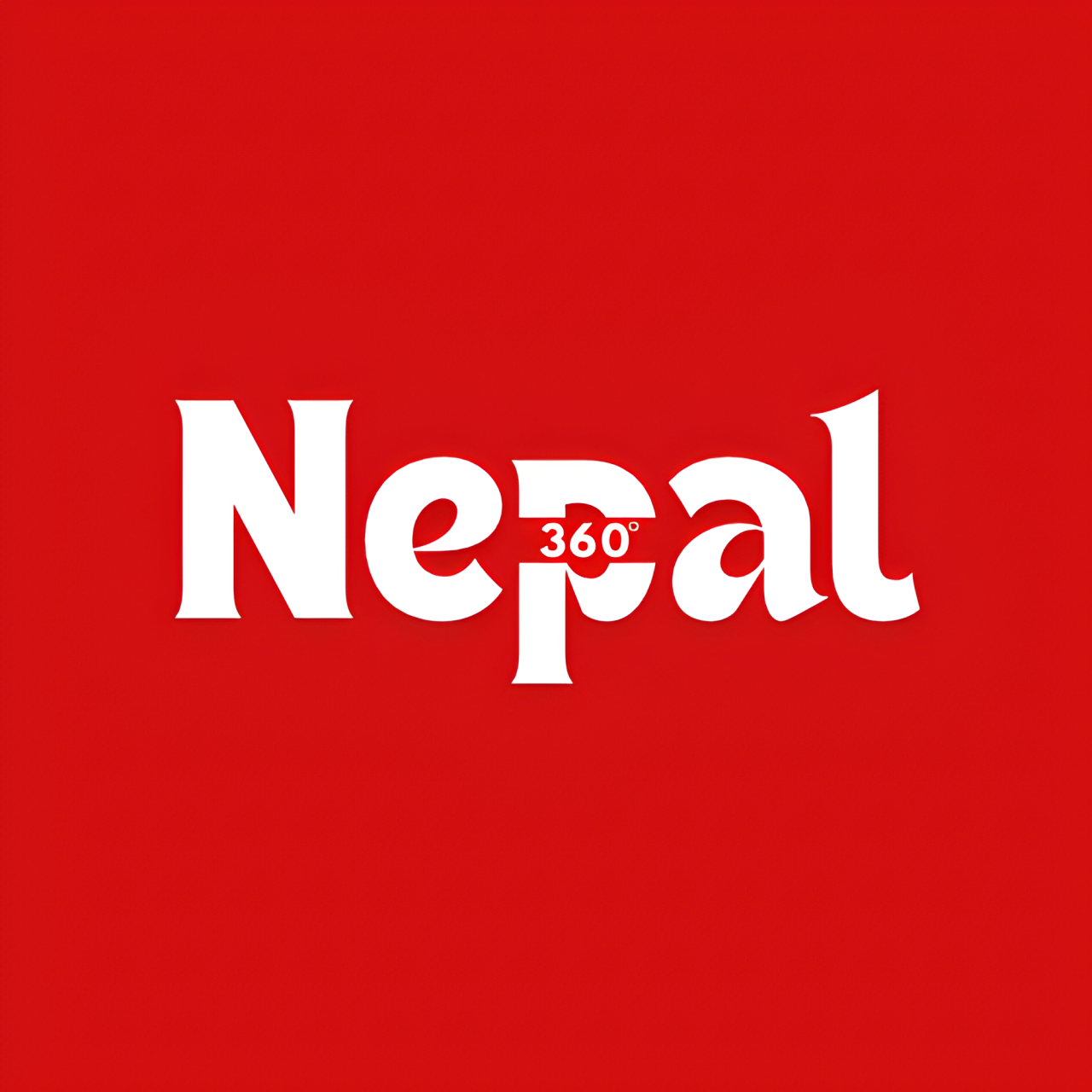Author
Posts by Nepal 360

Ganga Sonam: From Village to Nepal Idol Season 6 Winner
From the quiet hills of Sindhupalchowk to the bright lights of Nepal Idol Season 6, Ganga Sonam has won hearts and become the Nepal Idol Season 6 winner. Her story is all about dreams, hard work, and Nepali music that feels like home. In her small Sindhupalchowk village, Ganga grew up singing folk songs at weddings and festivals. Music was her life, not just fun. No big studios or coaches, just pure love for singing. With her family’s support, she joined Nepal Idol Season 6, and her voice worked magic, leading her to become the Nepal Idol Season 6 winner. Ganga’s magic is her heart. Her songs make you feel something deep. Her performances of “Khelaula Deuda” and “Sanghuri Bari” stole the show. “Khelaula Deuda,” a fun song about Nepal’s hill culture, got everyone dancing. It went viral online, with fans loving its Nepali culture and vibe. “Sanghuri Bari,” a soft song about love and home, made people cry, especially those who miss their villages. Ganga keeps things simple. In a world full of flashy music, her honest singing talent stands out. She sings like she’s sharing your story, feeling like Nepal’s sister. Her emotional performances connect fans from villages to cities. Sindhupalchowk is super proud. Ganga wore traditional clothes, sang folk songs, and showed her roots on stage. Her hometown, local media, and fans cheered loud, sharing her videos and voting hard. She’s not just a singer—she’s a symbol of hope. Becoming the Nepal Idol Season 6 winner is a win for every dreamer. Fans call her voice “pure” and “soulful.” Music producers are calling, and her social media is buzzing, but Ganga stays humble, thanking fans and cheering on other village dreamers. Her music brings Nepal together, crossing all cultures. From a village singer to the Nepal Idol Season 6 winner, Ganga’s music journey shows that with heart and hustle, you can do anything.
Entertainment

Rabindra Dhant Claims MFN 17 Bantamweight Title in Epic Victory
On August 2, 2025, Nepal’s Rabindra Dhant, known as Bajhang Ko Bagh (Nepal’s Tiger), etched his name in history by winning the Matrix Fight Night (MFN) 17 Bantamweight Championship in Greater Noida, India. In a thrilling main event, Dhant faced India’s Chungreng Koren, nicknamed The Indian Rhino, and delivered a knockout victory that left fans in awe. This triumph marks a monumental moment for Nepali mixed martial arts (MMA), as Dhant brings the prestigious title home. Rabindra Dhant Dhant, a 26-year-old fighter from Bajhang, Nepal, showcased incredible skill and heart. With an impressive 8-1 record, including six knockouts, he entered the cage with confidence. His opponent, Koren, was on a five-fight win streak with a 7-1 record, making this a high-stakes battle. The Shaheed Vijay Singh Pathik Sports Complex buzzed with excitement as the two warriors clashed for the 135 lbs title. Dhant’s relentless pressure and precise striking overwhelmed Koren, ending the fight with a decisive knockout. Born in a remote district of Nepal, Dhant’s journey to the top was not easy. Growing up with limited resources and only a Grade 10 education, he moved to India for work but never gave up on his dream. Training at Lock N Roll MMA in Nepal and later at Bali’s Soma Fight Club, Dhant honed his skills. His dedication paid off as he became a role model for aspiring Nepali fighters. Through platforms like the Nepal Warriors Championship (NWC), he has inspired a new generation to pursue MMA. Matrix Fight Night, founded in 2019 by Bollywood star Tiger Shroff and his family, is a leading MMA promotion in South Asia. MFN 17 featured 13 exciting bouts, including a co-main event Strawweight title fight between India’s Sonam Zomba and Russia’s Anna Safeeva. Dhant’s victory stole the show, proving Nepal’s growing presence in the sport. The event was streamed live on JioCinema, Disney+ Hotstar, and YouTube, reaching fans worldwide. This win is more than a personal achievement for Dhant—it’s a symbol of Nepal’s rising potential in MMA. His family, once skeptical of his career choice, now beams with pride. Dhant’s story of grit and determination resonates with many, showing that dreams can come true with hard work. As the championship belt heads to Nepal, Rabindra Dhant stands tall as a national hero, inspiring countless others to chase greatness.
Sports
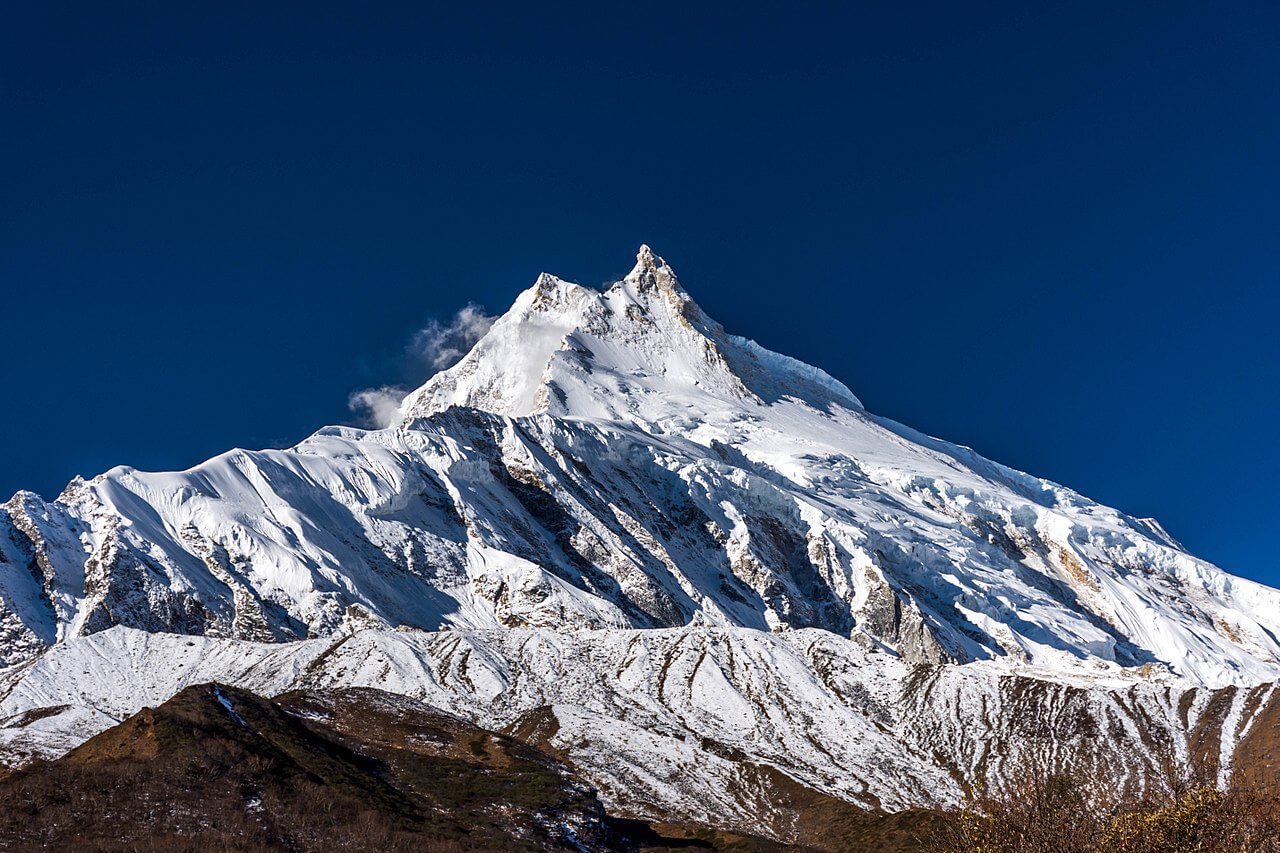
Manaslu Circuit Trek: Your Ultimate Guide to Nepal’s Hidden Gem
The Manaslu Circuit Trek is one of the most breathtaking adventures in Nepal trekking. Located in the heart of the Himalayas, this trek circles Mount Manaslu, the eighth-highest peak in the world at 8,163 meters. Unlike the crowded trails of Everest or Annapurna, the Manaslu trek offers a serene, off-the-beaten-path experience. With stunning views, rich cultural heritage, and diverse landscapes, it’s no wonder why adventurers call it Nepal’s hidden gem. This guide covers everything you need to know about the Manaslu Circuit Trek, including routes, costs, permits, itinerary, and tips to make your journey unforgettable. Why Choose the Manaslu Circuit Trek? The Manaslu Circuit Trek stands out for its unique blend of natural beauty and cultural immersion. Here’s why it’s a must-do for trekkers: Untouched Beauty: The Manaslu trek takes you through remote villages, lush forests, and high-altitude passes with jaw-dropping views of Mount Manaslu and surrounding peaks. Cultural Experience: Meet the Gurung and Tibetan communities, explore ancient monasteries, and witness traditional Nepal lifestyles. Less Crowded: Compared to Everest Base Camp or Annapurna Circuit, the Manaslu trek offers a quieter, more authentic experience. Adventure and Challenge: The Larkya La Pass (5,160 meters) is a thrilling highlight, testing your endurance while rewarding you with panoramic Himalayan views. Manaslu Circuit Trek Whether you’re a seasoned trekker or a beginner looking for an epic Himalayan trekking adventure, the Manaslu Circuit Trek has something for everyone. Manaslu Trek Itinerary: Day-by-Day Breakdown A typical Manaslu Circuit Trek itinerary spans 14–17 days, depending on your pace and acclimatization needs. Below is a sample 15-day itinerary for the Manaslu trek: Day 1: Kathmandu to Soti Khola (Drive) Distance: 140 km (8–9 hours) Start your Manaslu adventure with a scenic drive from Kathmandu to Soti Khola. Pass through lush valleys and small villages along the Budhi Gandaki River. Day 2: Soti Khola to Machha Khola Trekking Time: 6–7 hours Trek along the Budhi Gandaki River, passing terraced fields and small settlements. The trail is relatively easy, preparing you for the Manaslu trek difficulty ahead. Day 3: Machha Khola to Jagat Trekking Time: 6–7 hours Enter the Manaslu Conservation Area. The trail climbs through forests and offers glimpses of the Himalayas. Jagat is a charming village with stone houses. Day 4: Jagat to Deng Trekking Time: 6–7 hours Cross suspension bridges and enjoy views of waterfalls. The trail becomes more rugged, hinting at the Manaslu trek’s adventurous spirit. Day 5: Deng to Namrung Trekking Time: 6 hours Pass through Gurung villages and notice the Tibetan influence in architecture and culture. Namrung offers stunning views of Mount Manaslu. Day 6: Namrung to Samagaon Trekking Time: 6–7 hours Trek through pine forests and barley fields. Samagaon is a key stop for acclimatization, with a monastery and views of Manaslu. Day 7: Acclimatization Day in Samagaon Rest or take a side trip to Pungyen Gompa or Manaslu Base Camp. This helps you adjust to the high altitude. Day 8: Samagaon to Samdo Trekking Time: 4–5 hours A shorter trek to Samdo, a remote Tibetan village. Enjoy the peaceful atmosphere and prepare for the challenging Larkya La Pass. Day 9: Samdo to Dharmasala Trekking Time: 4–5 hours The trail ascends to Dharmasala, the last stop before the Larkya La Pass. Rest early to prepare for the big day. Day 10: Dharmasala to Larkya La Pass to Bimthang Trekking Time: 8–10 hours The highlight of the Manaslu Circuit Trek! Cross the Larkya La Pass (5,160 meters) with breathtaking views of Himalayan peaks. Descend to Bimthang for the night. Day 11: Bimthang to Tilije Trekking Time: 5–6 hours Descend through pine forests and meadows. Tilije is a welcoming Gurung village with warm hospitality. Day 12: Tilije to Tal Trekking Time: 5–6 hours The trail joins the Annapurna Circuit briefly. Enjoy views of the Marsyangdi River and stay in Tal. Day 13: Tal to Syange Trekking Time: 6–7 hours Continue along the Marsyangdi River to Syange, a small village with basic teahouses. Day 14: Syange to Besisahar Trekking Time: 5–6 hours The final trekking day takes you to Besisahar, where you can celebrate completing the Manaslu trek. Day 15: Besisahar to Kathmandu (Drive) Distance: 180 km (7–8 hours) Return to Kathmandu with memories of your Manaslu adventure. This Manaslu trek itinerary ensures proper acclimatization and covers all major highlights, making it ideal for most trekkers. Manaslu Trek Cost: Budgeting for Your Adventure The Manaslu trek cost varies based on whether you hire a guide, join a group, or trek independently. Here’s a breakdown: Permits: The Manaslu trek permit includes the Restricted Area Permit ($100–$140 for 7–14 days), Manaslu Conservation Area Permit ($30), and Annapurna Conservation Area Permit ($30). Total: ~$160–$200. Guide and Porter: Hiring a Manaslu trek guide costs $20–$30 per day, while porters charge $15–$20 per day. Accommodation: Teahouses along the Manaslu trek cost $5–$10 per night. Food: Meals cost $5–$10 per meal, totaling $15–$30 per day. Transport: The drive from Kathmandu to Soti Khola and back from Besisahar costs $20–$50. Miscellaneous: Budget $100–$200 for gear, tips, and extras. Total Estimated Cost: $800–$1,500 for a 15-day trek, depending on group size and services. Manaslu Trek Permit: What You Need to Know The Manaslu Circuit Trek is a restricted area trek, requiring special permits: Restricted Area Permit (RAP): Mandatory for the Manaslu region. Costs $100 for the first 7 days (September–November) or $75 (December–August), plus $15 per extra day. Manaslu Conservation Area Permit (MCAP): $30 per person. Annapurna Conservation Area Permit (ACAP): $30 per person, as the trek ends in the Annapurna region. You must trek with a licensed Manaslu trek guide and at least one other person (minimum group of two). Permits are processed through a registered trekking agency in Nepal. Manaslu Trek Difficulty: Is It Right for You? The Manaslu trek difficulty is moderate to challenging. Key factors include: Altitude: The Larkya La Pass (5,160 meters) poses a risk of altitude sickness. Proper acclimatization is crucial. Terrain: The trail includes steep ascents, descents, and rocky paths. Duration: 14–17 days of trekking requires good stamina. Weather: Unpredictable Himalayan weather can make conditions tough, especially at high altitudes. Beginners with decent fitness can complete the Manaslu trek with proper preparation. Experienced trekkers will enjoy the challenge of the Larkya La Pass. Manaslu Trek Preparation: Essential Tips To ensure a safe and enjoyable Manaslu adventure, follow these Manaslu trek tips: Physical Fitness: Train with cardio, strength exercises, and hiking 2–3 months before your trip. Gear: Pack warm layers, a good sleeping bag, trekking poles, and sturdy boots. Rent or buy gear in Kathmandu to save costs. Acclimatization: Follow the itinerary’s rest days to avoid altitude sickness. Permits: Work with a trekking agency to secure all Manaslu trek permits. Guide and Porter: A Manaslu trek guide is mandatory and enhances safety and cultural insights. Porters can carry heavy loads. Travel Insurance: Get insurance covering high-altitude trekking in Nepal (up to 6,000 meters). Cash: Carry Nepali rupees for teahouses, as ATMs are unavailable on the trail. Best Time for the Manaslu Circuit Trek The best seasons for the Manaslu Circuit Trek are: Spring (March–May): Mild weather, blooming rhododendrons, and clear Himalayan views. Autumn (September–November): Stable weather, crisp air, and excellent visibility. Winter (December–February): Cold but quieter trails. Be prepared for snow at Larkya La Pass. Monsoon (June–August): Avoid this season due to rain, landslides, and leeches. For the best experience, plan your Manaslu trek in September–November or March–May. Manaslu Trek Routes: Exploring the Trail The Manaslu trek routes cover diverse landscapes, from lowland forests to high-altitude passes. Key highlights include: Budhi Gandaki Valley: Lush greenery, waterfalls, and suspension bridges. Samagaon: A cultural hub with monasteries and views of Mount Manaslu. Larkya La Pass: The trek’s climax, offering panoramic Himalayan vistas. Annapurna Circuit: The final stretch overlaps with this famous trail. Optional side trips include Manaslu Base Camp and Tsum Valley, adding cultural and scenic depth to your Manaslu adventure. Manaslu Trekking Packages: Choosing the Right One Many trekking agencies offer Manaslu trekking packages, ranging from budget to luxury. Packages typically include: Permits and paperwork Guide and porter services Transport to and from Kathmandu Accommodation and meals Itinerary planning Prices range from $900–$2,000, depending on group size, duration, and inclusions. Research reputable agencies in Kathmandu for the best deals. Cultural Highlights of the Manaslu Trek The Manaslu Circuit Trek is as much a cultural journey as a physical one. You’ll encounter: Gurung and Tibetan Communities: Learn about their traditions, food, and festivals. Monasteries: Visit ancient sites like Pungyen Gompa and Samagaon Monastery. Chortens and Mani Walls: These Buddhist structures dot the trail, adding spiritual depth. Respect local customs by dressing modestly and asking permission before photographing people. Manaslu Trek Tips: Practical Advice for Trekkers Here are additional Manaslu trek tips to enhance your experience: Stay Hydrated: Drink 3–4 liters of water daily to combat altitude effects. Pack Light: Aim for a 10–15 kg backpack if carrying your own gear. Respect Nature: Follow Leave No Trace principles to protect the Manaslu Conservation Area. Learn Basic Nepali: Phrases like “Namaste” (hello) and “Dhanyabad” (thank you) go a long way. Check Weather: Monitor forecasts for Larkya La Pass, as snow can close the trail. Nepal Travel: Planning Your Trip The Manaslu Circuit Trek is part of a broader Nepal travel experience. Consider these tips: Arrive in Kathmandu: Spend 1–2 days exploring Thamel, Boudhanath, and Pashupatinath. Visa: Get a tourist visa on arrival at Tribhuvan International Airport ($30–$50). Currency: Use Nepali rupees (NPR). Exchange money in Kathmandu for better rates. Connectivity: Buy a local SIM card for basic internet access in villages. Safety on the Manaslu Circuit Trek Safety is crucial on the Manaslu trek. Follow these guidelines: Altitude Sickness: Watch for symptoms like headaches or nausea. Descend if symptoms worsen. Trail Safety: Stick to marked paths and follow your Manaslu trek guide. Emergency: Carry a satellite phone or rely on your guide for evacuation plans. Environmental Impact of Trekking in Nepal The Manaslu Conservation Area is a protected region. Help preserve it by: Avoiding single-use plastics. Supporting local teahouses and businesses. Respecting wildlife and flora. Sustainable trekking in Nepal ensures the Himalayas remain pristine for future adventurers. Conclusion: Embark on Your Manaslu Adventure The Manaslu Circuit Trek is a journey of a lifetime, blending adventure, culture, and natural beauty. With proper Manaslu trek preparation, a well-planned Manaslu trek itinerary, and the right Manaslu trekking packages, you’re set for an unforgettable Himalayan trekking experience. Whether you’re drawn to the challenge of the Larkya La Pass, the serenity of Samagaon, or the cultural richness of Gurung villages, the Manaslu trek delivers it all. Ready to explore Nepal’s hidden gem? Book your Manaslu Circuit Trek today and step into the heart of the Himalayas!
Travelling
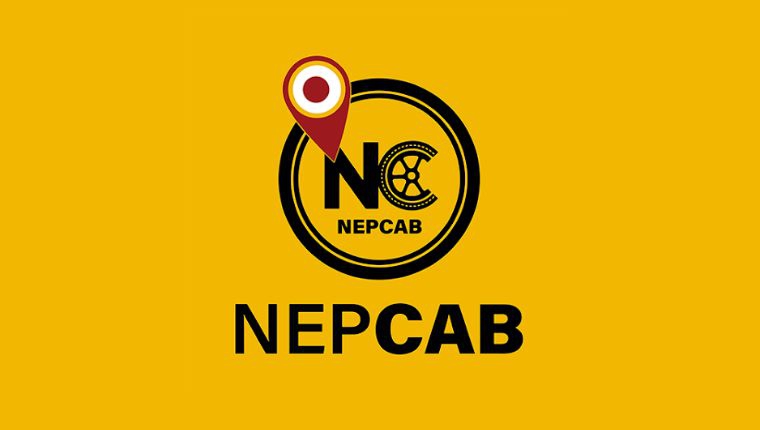
NepCap: Revolutionizing Ridesharing in Nepalgunj with Affordable and Safe Travel
Nepalgunj, a bustling city in western Nepal, is seeing a travel revolution with the launch of NepCap, a ridesharing app designed to make commuting easier, safer, and more affordable. Launched in July 2025, NepCap has quickly become the go-to choice for residents and visitors seeking affordable rides and convenient travel in this vibrant border city. What is NepCap? NepCap is a locally developed ridesharing app that allows users to book rides using private vehicles, including cars and bikes, through a simple mobile platform. Unlike traditional taxis, NepCap connects passengers with local drivers, offering safe travel and affordable rides tailored to the needs of Nepalgunj residents. Whether you're heading to work, visiting the Bageshwori Temple, or exploring the city’s markets, NepCap ensures a hassle-free ride. Why NepCap Stands Out in Nepalgunj Affordable Rides: NepCap offers competitive pricing, making it cheaper than traditional taxis. With no surge pricing, commuters can enjoy Nepalgunj transport without worrying about unexpected costs. Safe Travel: Safety is a priority for NepCap. The app includes features like driver verification, real-time ride tracking, and emergency support, ensuring passengers feel secure during their Nepalgunj journeys. Convenient Travel: With the NepCap app, booking a ride is as easy as a few taps on your smartphone. The user-friendly interface lets you choose your destination, select a vehicle, and track your driver in real time. Local Commuting: Designed for Nepalgunj, NepCap supports the city’s unique needs, including quick trips to nearby border towns like Birjung or Bhairawa, popular for destination weddings. Eco-Friendly: By promoting ridesharing, NepCap helps reduce traffic congestion and pollution, contributing to a greener Nepal transport system. How NepCap Benefits Nepalgunj Commuters For daily commuters in Nepalgunj, NepCap is a game-changer. Students, professionals, and tourists can book rides for short trips across the city or longer journeys to nearby areas. The app’s flexibility allows users to choose between cars and bikes, catering to different budgets and preferences. With NepCap, you no longer need to haggle with taxi drivers or wait for crowded buses. Local driver Ram Bahadur, who joined NepCap, says, “This ridesharing app gives me steady income while helping people in Nepalgunj get around easily. It’s a win-win!” NepCap’s Impact on Nepalgunj’s Economy NepCap is not just about convenient travel; it’s also boosting the local economy. By providing opportunities for local drivers, the app creates jobs and supports small businesses. The rise of Nepalgunj as a hub for destination weddings has increased demand for reliable Nepal ridesharing services, and NepCap is meeting that need. How to Use the NepCap App Getting started with NepCap is simple: Download the NepCap app from the Google Play Store or Apple App Store. Sign up with your phone number and set up your profile. Enter your pickup and drop-off locations to book a ride. Choose your vehicle type (car or bike) and confirm your booking. Track your driver in real time and enjoy a safe and affordable ride. Why Nepalgunj Loves NepCap Residents of Nepalgunj are praising NepCap for its reliability and affordability. “I used to spend so much on taxis,” says Priya Sharma, a local student. “Now, with NepCap, I can book rides at half the price, and the drivers are so friendly!” Tourists visiting Nepalgunj for its cultural attractions or proximity to the Indian border also find NepCap a lifesaver. The app’s seamless ride booking system and focus on safe travel make it ideal for exploring the city and beyond. The Future of Ridesharing in Nepalgunj As Nepalgunj grows as a commercial and tourism hub, NepCap is poised to lead the Nepal ridesharing market. With plans to expand to other cities and introduce new features like carpooling and premium rides, NepCap is set to redefine Nepal transport. The app’s success reflects the growing demand for ridesharing apps that prioritize affordable rides, safety, and convenience. Conclusion NepCap is transforming how people move in Nepalgunj. With its focus on affordable rides, safe travel, and convenient ride booking, it’s no wonder why this ridesharing app is gaining popularity. Whether you’re a daily commuter or a visitor, NepCap offers a reliable and budget-friendly way to explore Nepalgunj. Download the NepCap app today and experience the future of Nepal ridesharing!
Technology
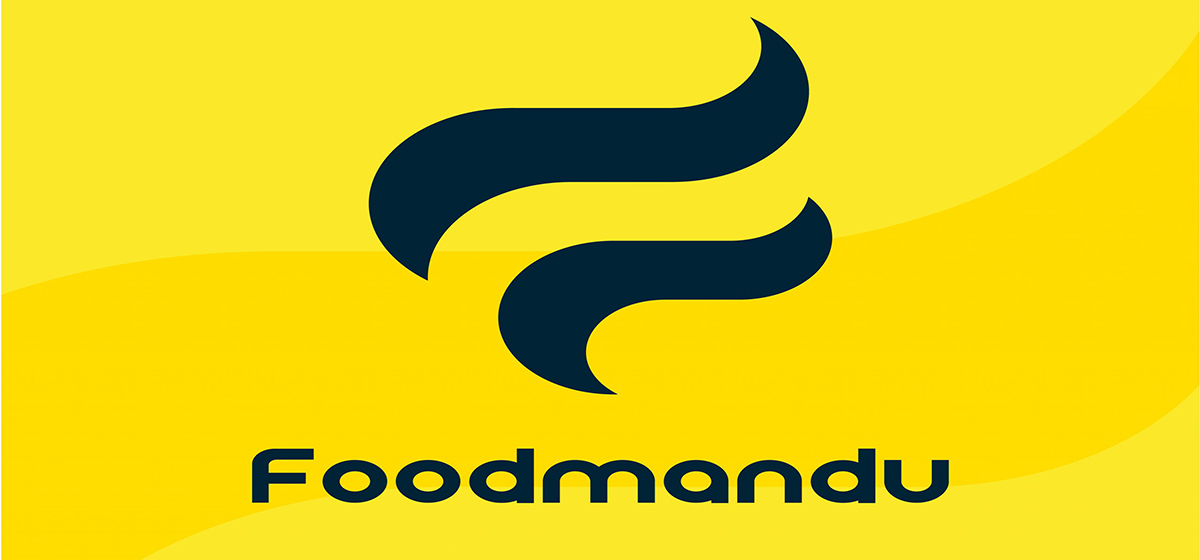
The Inspiring Story of Foodmandu: Nepal’s Pioneer in Online Food Delivery
In the bustling streets of Kathmandu back in 2010, the concept of ordering food online was almost unheard of. Dining out was a planned event, and food delivery was limited to a few restaurants offering phone orders without any digital platform. It was in this landscape that Foodmandu was born, pioneering Nepal’s first online food delivery service and forever changing the way Nepalis experience food. In the bustling streets of Kathmandu back in 2010, the concept of ordering food online was almost unheard of. Dining out was a planned event, and food delivery was limited to a few restaurants offering phone orders without any digital platform. It was in this landscape that Foodmandu was born, pioneering Nepal’s first online food delivery service and forever changing the way Nepalis experience food. Startup Vision: Solving a Simple Problem Founded in November 2010 by Manohar Adhikari, Foodmandu emerged from a simple yet relatable problem: Adhikari, a busy software developer, often struggled to find time to eat during his hectic workdays. He realized that Kathmandu lacked a reliable and convenient way to order food online. This insight sparked the idea to create a platform that connected consumers with local restaurants, delivering meals right to their doorsteps — a revolutionary concept in Nepal at the time. Early Days: A Humble Beginning Amid Skepticism When Foodmandu launched, it operated with just 10 restaurants and a small team of 4 employees. Most restaurants were skeptical about joining an online platform, uncertain about how it would affect their traditional business. Customers were equally cautious, unfamiliar with online ordering and unsure if the food would arrive on time or at all. The startup averaged only five orders per day, reflecting the challenge of building trust in a new digital market. Hiring delivery riders was another uphill task. The concept of food delivery as a profession was new, and navigating Kathmandu’s congested streets required logistical precision and determination. Yet, Adhikari’s belief in the idea pushed the company forward. Growth and Expansion: From Startup to Market Leader A major turning point came with the rise in internet usage and smartphone adoption in Nepal. In 2015, Foodmandu launched its mobile app, making online food ordering faster and easier. In 2016, the startup secured investment from True North Associates, enabling them to scale up operations, upgrade technology, and partner with more restaurants. The number of partner restaurants expanded from 10 to over 500, and daily orders grew to over 2,000. More funding came in 2020 through a Series B investment by Team Ventures, and in 2023, USD 4 million was secured through a Series C round from Dolma Impact Fund II. These investments helped Foodmandu: Expand to five cities Diversify services to include groceries, beverages, and fresh vegetables Partner with local farmers and wholesalers Today, Foodmandu partners with 900+ restaurants and vendors, employs 300+ staff, and manages a fleet of over 200 full-time delivery riders. It serves more than 350,000 customers across Nepal. Overcoming Challenges: Resilience in a Changing Market The path to success wasn’t easy. The 2015 earthquake and economic blockade disrupted operations and tested the company’s resilience. But Foodmandu strengthened its supply chain and logistics to ensure service continuity. Convincing customers to shift from cash-based payments to online transactions was another major challenge. The company integrated local digital wallets like eSewa and Khalti, simplifying payments and building customer trust. Route optimization, rider training, and real-time delivery tracking became priorities to maintain food quality and timely service — key elements of customer satisfaction and retention. Impact on Nepal’s Food Tech Industry and Society Foodmandu’s efforts reshaped Nepal’s food tech industry. It: Introduced and normalized online food ordering Created a new market segment Encouraged other startups to join the space Consumers, especially in urban areas, adopted online ordering as a convenient option. Restaurants that were once hesitant now rely on delivery partnerships to increase sales. The company also generated employment by creating jobs for riders, tech teams, customer support, and management roles. It has promoted diversity by empowering women in leadership positions. Commitment to Innovation and Customer Satisfaction The success of Foodmandu is grounded in its commitment to innovation and user experience. From a simple website to a robust mobile app, the company has evolved with consumer needs. It invests in: Advanced logistics Customer support systems Real-time feedback mechanisms Services like grocery delivery became crucial during the COVID-19 pandemic, ensuring households received essentials during lockdowns. Manohar Adhikari’s vision goes beyond food delivery — he aims to build a scalable e-commerce ecosystem tailored to Nepal’s digital evolution. Looking Ahead: The Future of Foodmandu Foodmandu is set to: Expand to more cities and even rural areas Adopt AI-powered delivery optimization Strengthen ties with local producers Contribute to Nepal’s agricultural economy The company’s growth story serves as a beacon for young entrepreneurs in Nepal, proving that a simple, practical idea backed by persistence can transform an entire industry. Conclusion From a modest startup in 2010 to Nepal’s leading food delivery platform, Foodmandu’s journey is truly inspiring. Founder Manohar Adhikari’s dedication turned a personal inconvenience into a nationwide solution that redefined how Nepalis eat, shop, and live. By revolutionizing online food delivery, Foodmandu not only contributed to Nepal’s digital economy but also set the stage for future startups. As it continues to grow, innovate, and expand, Foodmandu remains a powerful symbol of entrepreneurial spirit and digital transformation in Nepal.
Business
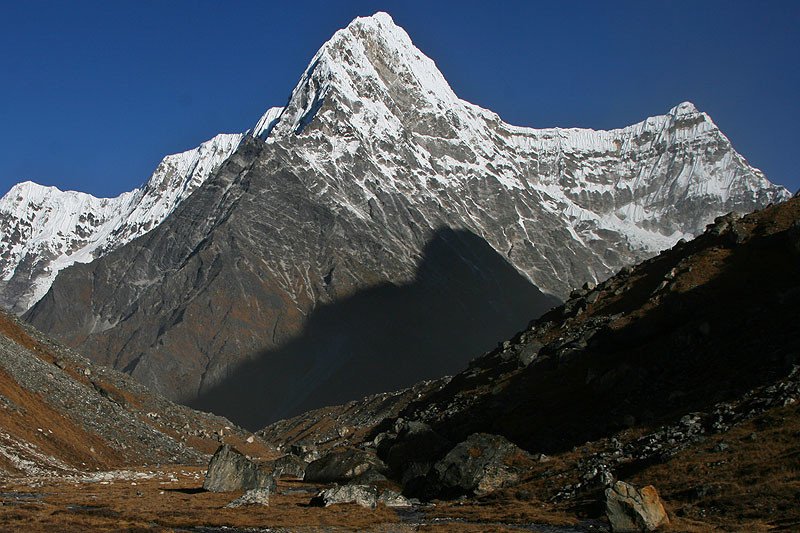
Tashi Lapcha Pass Trek: A Hidden Adventure
The Tashi Lapcha Pass Trek is a beautiful and quiet trek in Nepal. It goes through the Rolwaling Valley and ends in the Everest region. This trek is not famous like Everest or Annapurna, but it is very special. You will see tall mountains, green forests, big glaciers, and old villages. This trek is for people who want to walk in a quiet place and enjoy nature. It is a bit hard but also very fun. You will cross a high mountain pass called Tashi Lapcha, which is over 5,700 meters high! Tashi Lapcha Pass Trek Where is Tashi Lapcha Pass? Tashi Lapcha Pass is in eastern Nepal, between the Rolwaling Valley and the Everest region. It connects Dolakha district with the famous Khumbu area. The pass lies in the Himalayas, near big mountains like Gauri Shankar and Parchamo Peak. How to Start the Trek? You start the trek by taking a drive from Kathmandu to Gongar Khola. From there, you walk through small villages and forests. Each day you climb higher until you reach the snow area. You need a guide, permits, and camping gear because this is a remote trek. Trek Itinerary (18 Days) Here is a simple plan for the Tashi Lapcha Pass Trek: Day 1: Drive from Kathmandu to Gongar KholaDay 2: Trek to Simigaon (2,000m)Day 3: Trek to Dongang (2,790m)Day 4: Trek to Beding (3,690m)Day 5: Rest and explore Beding villageDay 6: Trek to Na Gaon (4,180m)Day 7: Acclimatization day at Na GaonDay 8: Trek to Tsho Rolpa Lake (4,540m)Day 9: Trek to Kabug and camp near glacierDay 10: Trek to Drolambu Glacier CampDay 11: Cross Tashi Lapcha Pass (5,755m)Day 12: Trek to Thame (3,820m)Day 13: Trek to Namche BazaarDay 14: Trek to LuklaDay 15: Fly to KathmanduDay 16–18: Rest or explore Kathmandu Top Highlights Here are the best things about this trek: Tsho Rolpa Lake A big blue lake with snow around it. It is very quiet and peaceful. Remote Villages See how people live in small villages like Beding and Na. They are kind and smile a lot. Glaciers and Ice Walk near giant glaciers and cross snowy paths. It looks like a snow fairyland. Tashi Lapcha Pass This is the highest and hardest part. It is cold but beautiful. You feel like touching the sky. Everest Region After crossing the pass, you walk in the famous Everest region. You might even see Mount Everest! Why Choose This Trek? It is less crowded than other treks. You can see real nature and wild animals. You learn about Tamang and Sherpa cultures. You walk in both Rolwaling and Everest areas. You feel proud when you finish the hard pass! What You’ll See on the Way? Nature Culture Adventure Mountains 🏔️ Old villages 🏘️ Snow pass ❄️ Lakes 🌊 Buddhist shrines 🛕 Glaciers 🧊 Forests 🌲 Yak pastures 🐂 Rope bridges 🌉 Trek Difficulty Level The Tashi Lapcha Trek is hard. You need to be strong and have trekking experience. There are long walks, high places, and snow. But if you go with a guide and walk slowly, it is safe and very fun! Trek Permits You Need To do this trek, you need: Gaurishankar Conservation Permit TIMS Card Sagarmatha National Park Permit Climbing permit for Tashi Lapcha Pass (because it's a technical pass) What to Pack? Here are the top things to bring: Warm clothes Trekking boots Sleeping bag Down jacket Gloves, hat, sunglasses Energy snacks Water purifier First aid kit Passport and permits Best Time to Trek The best months are: March to May (spring) September to November (autumn) These months have clear skies and less snow. It is safer and you can enjoy the views more. Who Should Go? People who love nature People who like quiet places Strong trekkers looking for a real adventure Friends or groups with a professional guide Top Photo Spots Take pictures at: Tsho Rolpa Lake Na Gaon village Tashi Lapcha Pass top Views of Gauri Shankar and Parchamo Namche Bazaar sunrise Internet & Mobile Network This is a remote trek. Only the early parts have mobile signals. After that, no internet, which means more time with nature! Why This Trek Is Special Tashi Lapcha Pass Trek is like a secret trail. You won’t meet many people. You’ll feel close to the mountains, to yourself, and to the sky. It is not just a walk — it is a big life memory. Summary: Quick Trek Facts Feature Detail Duration 15–18 days Max Altitude 5,755 meters Start Point Gongar Khola End Point Lukla Difficulty Hard Best Time Spring & Autumn Region Rolwaling + Everest Main Highlights Tsho Rolpa, Tashi Lapcha Pass, Glaciers, Villages
Travelling

